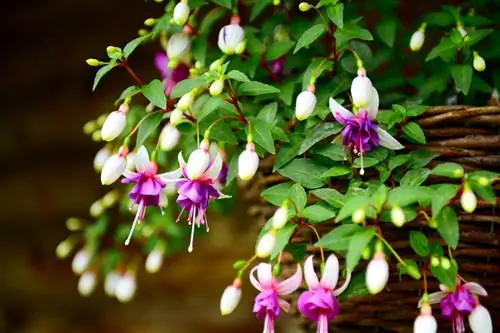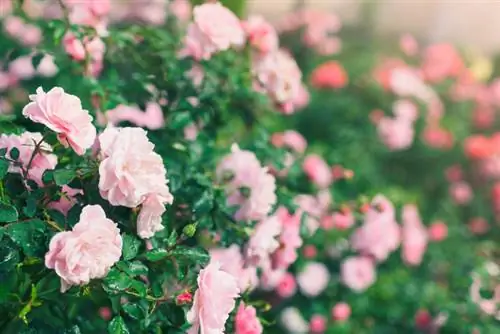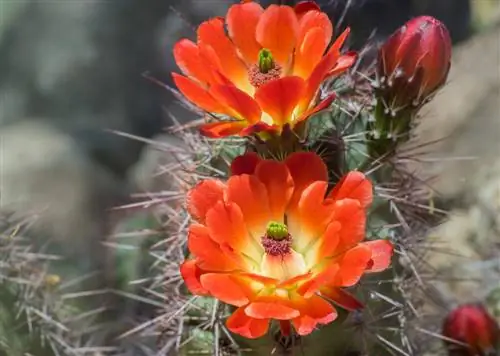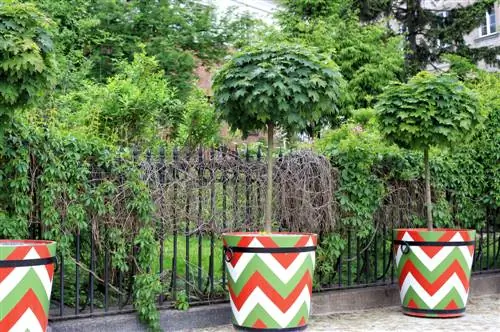- Author admin [email protected].
- Public 2023-12-16 16:46.
- Last modified 2025-01-23 11:21.
Syringa vulgaris, the common lilac, is a shrub or small tree that can grow up to six meters high in good conditions. Its flower spikes, up to 30 centimeters long, with numerous small purple or white flowers that exude the characteristic lilac scent are remarkable. You can usually find lilacs planted out in the garden, but under certain conditions you can also grow them in pots.

How do you properly care for lilacs in a pot?
To cultivate lilacs in containers, choose a small variety such as dwarf lilac, provide a sunny location, use well-drained substrate, water and fertilize regularly, prune after flowering and protect against winter vibes.
Which types and varieties of lilac are suitable for keeping in containers?
For container cultivation, you should choose a variety that is as small as possible, as this can naturally accommodate the limited space in a planter better. The various dwarf lilacs, such as the well-known variety 'Palibin', are well suited. Dwarf lilacs grow slowly, are only between 120 and 150 centimeters high and bloom at least as beautifully as the significantly larger garden lilacs. Of course, you can also plant this in a pot, but then you have to keep it small by cutting.
How big does a bucket have to be? Which material is particularly suitable?
Instead of giving the young plant a large pot from the start, it is better to transplant the lilac into a larger one about every two years. The rule of thumb is that the pot should have approximately twice the volume of the root ball. If the plant is given a large pot from the start, it will grow even faster; However, if the planter remains smaller, it adapts more easily to the existing conditions. If possible, choose a natural material such as clay or ceramic, as plastic pots (especially if they are black!) heat up quickly in the sun - which in turn is not comfortable for the roots.
Keep and care for lilacs in the pot properly
Otherwise, potted lilacs are just as easy to keep as planted specimens. To ensure that the plant thrives and you can enjoy the flowers every year, you should pay attention to the following points:
- sunny location
- water and fertilize regularly
- repot every two years
- prune regularly after flowering
- Protect roots from winter frost
Selection of location
Lilac is a very sunny plant that blooms more beautifully and luxuriantly the more sunny it gets. Therefore, a south-facing balcony or terrace is best suited, although the plant is also quite insensitive to heat and wind. Noble lilacs can often be cultivated in light partial shade, as long as they receive more than four hours of direct sun every day. However, there are bushes that are more suitable for shady locations.
Substrate
Choose a permeable, sandy substrate such as a mixture of pot plant soil (€18.00 on Amazon), sand and expanded clay. Good drainage is extremely important to avoid waterlogging.
Watering and fertilizing
Especially immediately after planting, during budding and during flowering, the substrate should always be kept slightly moist (but not wet!). Water moderately and do not allow the pot to dry out completely. Fertilize every two weeks between April and September with a low-nitrogen liquid container plant fertilizer.
Cutting lilacs
Lilac is always cut after flowering, but radical pruning should be avoided.
Tip
Since lilac is hardy, you can also overwinter it outside as a container plant. However, you should then wrap the pot with a protective fleece and place it on a piece of wood or Styrofoam.






